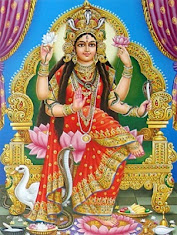Nestled in the enchanting hills of Meghalaya,
India, the Mawsmai Caves are a geological marvel that showcases the stunning
beauty of nature and the intricate processes of limestone formation. Located
approximately 6 kilometers from the picturesque town of Cherrapunji, known for
its heavy rainfall and lush landscapes, these caves are a popular tourist
destination, drawing adventurers and nature enthusiasts alike.
The Mawsmai Caves are part of a larger network of limestone caves in the Khasi Hills,
formed over millions of years through the process of erosion. The caves are a
fascinating testament to the power of water and time, as rainwater, rich in
carbon dioxide, seeps through the soil and interacts with the limestone rock.
This chemical reaction gradually dissolves the limestone, creating intricate
passages, chambers, and stalactites.
Visitors to Mawsmai are greeted by stunning
formations within the caves, including impressive stalactites and stalagmites
that resemble natural sculptures. The interplay of light and shadow in the damp
chambers adds an otherworldly atmosphere, making each corner of the cave a
discovery waiting to unfold.
Mawsmai Caves are relatively easy to access, with
well-maintained pathways leading visitors through the intricate network of
passages. The entrance to the cave is marked by a small ticket booth, where
visitors can obtain necessary permits. Once inside, the caves offer a thrilling
experience for explorers of all ages. The main passageway is illuminated,
allowing visitors to navigate safely while marveling at the formations around
them.
The caves stretch for about 1500 meters, though
only a portion is open to the public. Some sections are narrow and require
careful navigation, adding an element of adventure to the visit. Guided tours
are available, providing insights into the geology, ecology, and cultural
significance of the caves.
Beyond their geological allure, the Mawsmai Caves
are home to diverse flora and fauna. The humid environment supports various
species, including bats, insects, and unique plants. The presence of bats is
particularly notable; they play a crucial role in the cave's ecosystem, aiding
in pollination and seed dispersal. This delicate balance between nature and the
caves highlights the importance of preserving such natural wonders for future
generations.
The Mawsmai
Caves also hold cultural significance for the local Khasi tribe, who regard them
as sacred. The caves are intertwined with local legends and folklore, which
speak of spirits and mythical beings residing within. This cultural backdrop
adds a layer of mystique to the caves, enhancing the visitor experience.
Travelers are often encouraged to respect the local customs and beliefs while
exploring the area.
A visit to the Mawsmai Caves is not just about
exploring the underground world; it is also an opportunity to soak in the
breathtaking landscapes of Meghalaya. The area surrounding the caves is rich in
natural beauty, with lush greenery, cascading waterfalls, and breathtaking
views of the hills.
The Mawsmai
Caves are a remarkable testament to the beauty and complexity of nature. With
their stunning formations, ecological significance, and cultural heritage, they
offer a unique experience for all who venture within. As a part of Meghalaya's
rich tapestry of natural wonders, the Mawsmai Caves invite exploration,
reflection, and a deeper appreciation for the natural world. For those seeking adventure
and beauty in equal measure, the Mawsmai Caves stand out as an unforgettable
destination.














